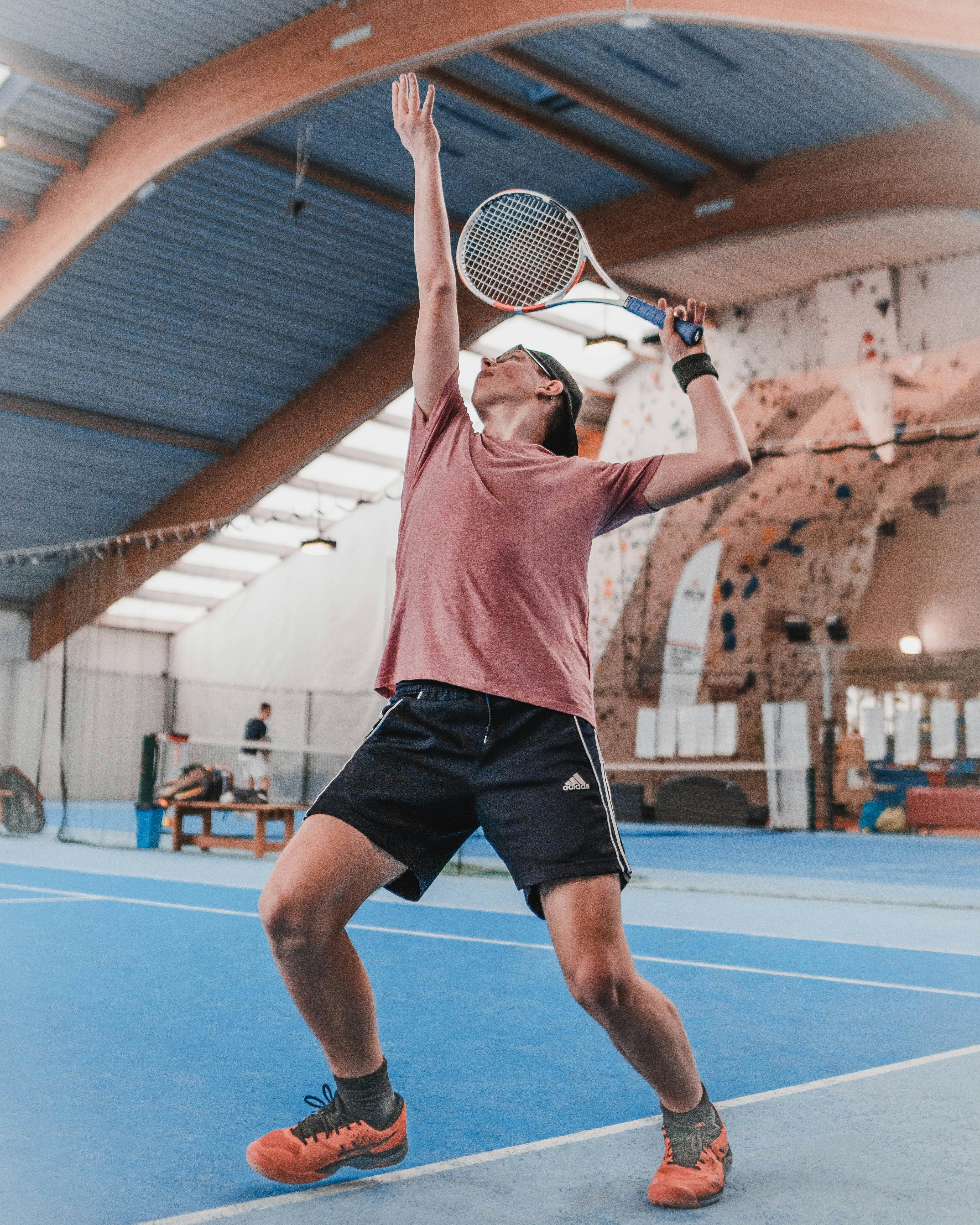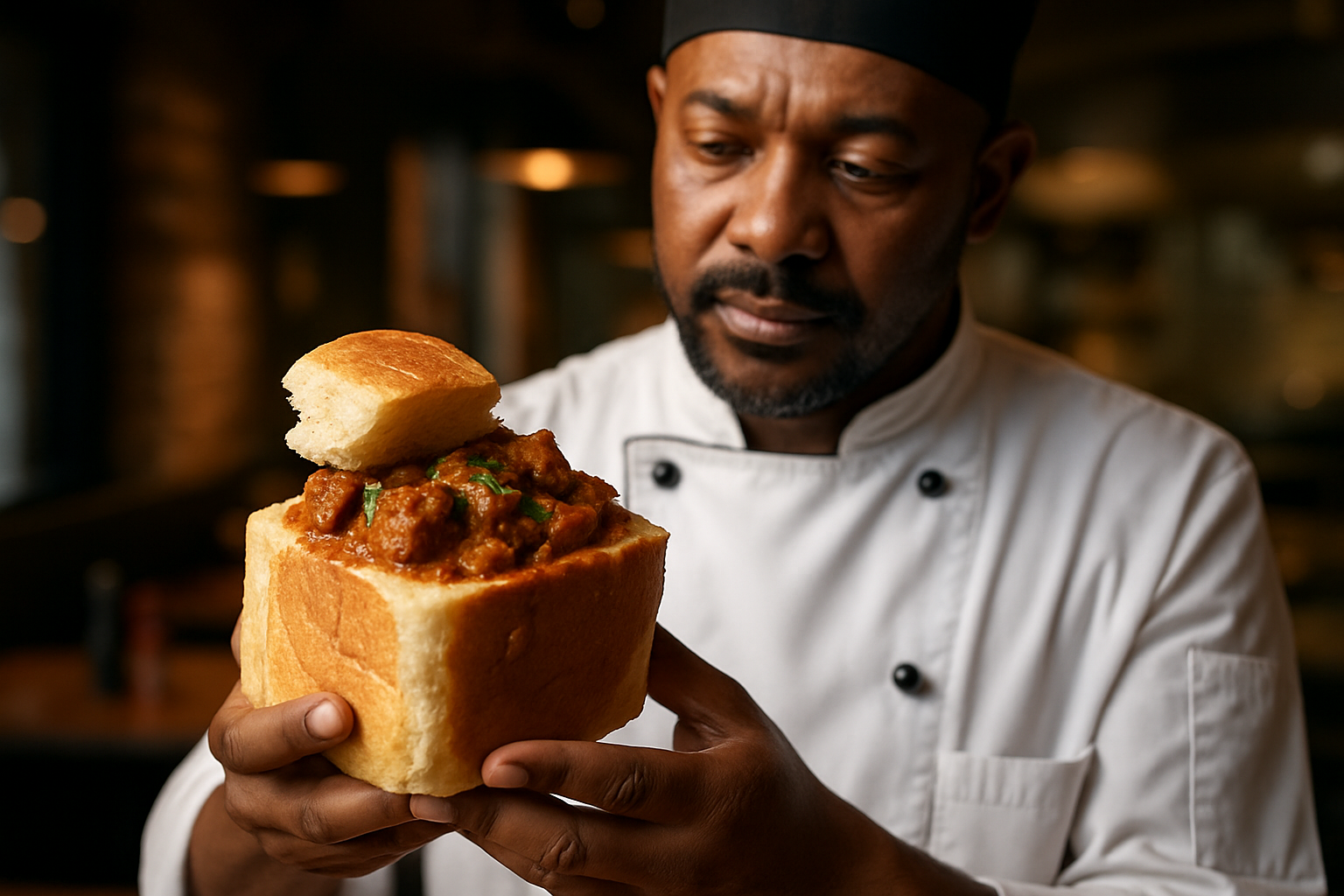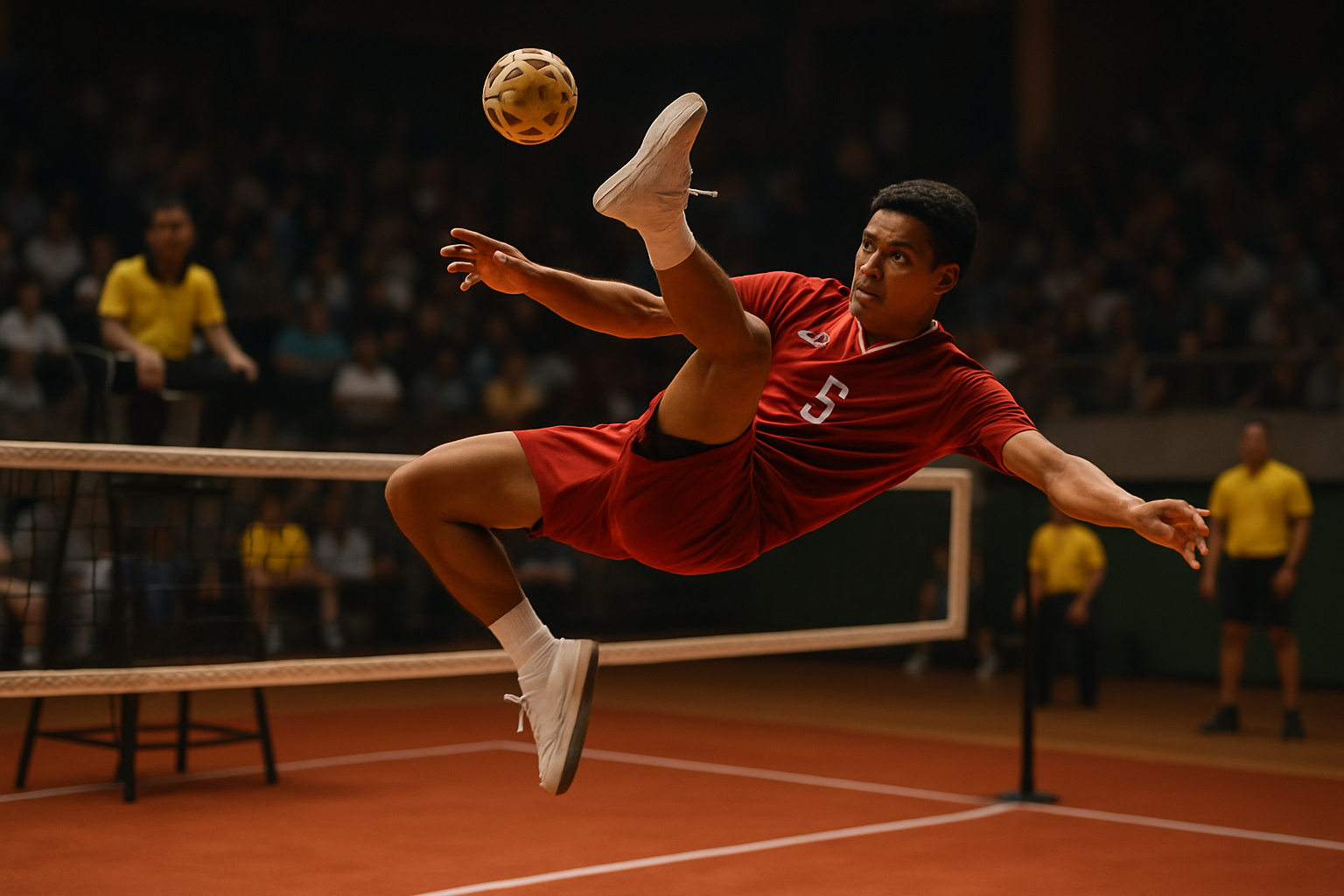Biomechanics of the Perfect Serve: Unraveling Tennis' Most Powerful Weapon
In the world of tennis, the serve stands as the ultimate offensive tool, a lightning-fast strike that can turn the tide of a match in an instant. This 60-word teaser delves into the intricate biomechanics behind the perfect serve, exploring how elite players harness physics, anatomy, and technique to create a devastating opening shot. From kinetic chain optimization to the millisecond adjustments that separate aces from faults, we'll uncover the science that powers tennis' most formidable weapon.

The biomechanics of the serve involve a intricate interplay between various body segments, each contributing to the overall power and accuracy of the shot. From the ground up, players must coordinate their legs, core, shoulders, arms, and wrists in a precise sequence to generate maximum force and spin. This kinetic chain, when executed perfectly, allows players to transfer energy efficiently from their lower body through to the racquet, resulting in serves that can exceed 150 mph.
Understanding the biomechanics of the serve is crucial not only for improving performance but also for preventing injuries. The high-speed, repetitive nature of the serve puts significant stress on the body, particularly the shoulder and lower back. By optimizing technique and movement patterns, players can reduce their risk of injury while maximizing their serve’s effectiveness.
The Kinetic Chain: From Ground to Racquet
At the heart of a powerful serve lies the concept of the kinetic chain – a sequence of coordinated body movements that transfer energy from the ground through the body and into the tennis ball. This chain begins with the legs and works its way up through the body, with each segment adding to the overall force generated.
The serve typically starts with a slight knee bend, allowing players to load energy into their leg muscles. As they begin to rise, this stored energy is released, initiating a ripple effect through the body. The hips and trunk rotate, followed by the shoulders, upper arm, forearm, wrist, and finally, the racquet. This sequential activation of body segments is crucial for maximizing power output.
Research has shown that the lower body contributes significantly to serve speed. A study published in the Journal of Sports Sciences found that professional tennis players generate up to 51% of the total force in their serve from ground reaction forces. This highlights the importance of a strong leg drive and proper weight transfer in executing a powerful serve.
The trunk and core play a vital role in connecting the lower body to the upper body. As players rotate their hips and torso, they create a stretch in the abdominal and oblique muscles. This stretch-shortening cycle allows for explosive rotation, contributing to both power and spin generation. Elite players often exhibit a greater degree of trunk rotation and forward tilt compared to amateur players, allowing them to generate more racquet head speed.
Shoulder Mechanics: The Power Generator
While the legs and core provide the foundation, it’s the shoulder complex that truly unleashes the serve’s power. The shoulder joint, being the most mobile joint in the body, allows for a wide range of motion necessary for the serve. However, this mobility also makes it susceptible to injury if not properly managed.
The serve motion places the shoulder through extreme ranges of motion, particularly during the cocking phase and follow-through. During the cocking phase, the shoulder moves into extreme external rotation, storing elastic energy in the muscles and connective tissues. As the player transitions into the acceleration phase, this stored energy is rapidly released, contributing to the explosive nature of the serve.
One key aspect of shoulder biomechanics in serving is the concept of internal rotation velocity. Studies have shown that professional players can achieve internal rotation velocities of up to 2420 degrees per second during the serve. This rapid internal rotation is a major contributor to serve speed and is often a key differentiator between elite and amateur players.
Another crucial element is scapular retraction and protraction. Proper scapular movement ensures optimal positioning of the shoulder joint throughout the serve motion. Elite players exhibit greater scapular retraction during the cocking phase and more protraction during follow-through, allowing for a larger range of motion and potentially reducing injury risk.
Wrist and Racquet Interaction: The Final Link
As we move down the kinetic chain, we arrive at the wrist and racquet – the final link in transferring energy to the ball. The wrist plays a crucial role in both power generation and spin control, acting as a lever to increase racquet head speed and allowing for last-moment adjustments to ball contact.
During the acceleration phase, the wrist moves from extension to flexion, adding to the overall racquet head speed. This “wrist snap” can contribute significantly to serve velocity. A study in the International Journal of Sports Science & Coaching found that wrist flexion velocities during the serve can reach up to 1900 degrees per second in professional players.
The angle of the racquet face at impact is critical for determining the serve’s trajectory and spin. Even small changes in racquet angle can result in significant differences in ball placement and behavior. Elite players have the ability to make minute adjustments to their wrist position in the milliseconds before impact, allowing them to hit their intended targets with remarkable consistency.
Spin generation is another crucial aspect of serving, particularly for creating kick serves or slice serves. The interaction between the strings and the ball during contact determines the amount and type of spin imparted. Players can manipulate this interaction by adjusting their racquet path and angle through precise wrist control.
Ball Toss: The Unsung Hero of the Serve
Often overlooked but critically important is the ball toss. A consistent and accurate ball toss sets the foundation for a successful serve, allowing players to make clean contact with the ball at the optimal height and position. The biomechanics of the ball toss involve coordinated movement of the non-dominant arm and precise timing with the serving motion.
Research has shown that elite players exhibit remarkably consistent ball toss patterns. A study in the Journal of Sports Sciences analyzed the ball tosses of professional players and found that the standard deviation in toss height was less than 4 cm for most players. This consistency allows for more reliable timing and contact point, leading to improved serve accuracy and power.
The height and position of the ball toss can significantly impact serve mechanics. A higher toss allows for greater potential energy to be converted into kinetic energy as the player reaches up to contact the ball. However, timing becomes more critical with a higher toss. Conversely, a lower toss may offer more control but potentially at the cost of some power.
The positioning of the toss in relation to the player’s body also affects serve type and spin. A toss further in front of the body tends to produce flatter serves, while a toss more above or behind the player can facilitate kick serves or slice serves. Elite players have the ability to subtly vary their tosses to disguise their serve intentions, adding an element of deception to their game.
Biomechanical Variability and Injury Prevention
While there are general biomechanical principles that apply to all tennis serves, it’s important to note that there is no one-size-fits-all approach. Individual differences in body structure, flexibility, and strength can lead to variations in optimal serving technique. What works for one player may not be ideal for another, highlighting the importance of individualized biomechanical analysis in improving serve performance.
Moreover, the high-speed, repetitive nature of the tennis serve puts significant stress on the body, particularly the shoulder and lower back. Understanding the biomechanics of the serve is crucial not only for performance enhancement but also for injury prevention. Common serve-related injuries include rotator cuff tears, labral injuries, and lower back strains.
To mitigate injury risk, players and coaches should focus on developing a serve technique that optimizes performance while minimizing harmful stresses on the body. This may involve adjustments to the kinetic chain sequencing, improvements in core stability, or modifications to the follow-through phase.
Strength and conditioning programs tailored to the biomechanical demands of the serve can also play a crucial role in injury prevention. Exercises that target the rotator cuff muscles, scapular stabilizers, and core musculature can help build the strength and endurance necessary to withstand the rigors of repeated serving.
Technology in Serve Analysis
Advancements in technology have revolutionized our understanding of serve biomechanics and our ability to analyze and improve serving technique. High-speed video analysis, 3D motion capture systems, and inertial measurement units (IMUs) now allow for detailed quantification of serve kinematics and kinetics.
These technologies provide coaches and players with objective data on various aspects of the serve, including joint angles, segment velocities, and racquet parameters. This information can be used to identify areas for improvement, track progress over time, and make data-driven decisions about technique modifications.
For example, IMU sensors attached to the racquet can provide precise measurements of racquet head speed, spin rate, and impact location. This data can be correlated with serve speed and accuracy, allowing players to optimize their technique for maximum effectiveness.
3D motion capture systems offer comprehensive analysis of full-body kinematics during the serve. By tracking markers placed on key anatomical landmarks, these systems can generate detailed models of a player’s serve motion. This allows for in-depth analysis of kinetic chain sequencing, joint loading, and potential injury risk factors.
The Mental Game: Cognitive Aspects of Serving
While biomechanics forms the physical foundation of the serve, the mental aspects of serving cannot be overlooked. The serve is unique in tennis as it’s the only stroke where players have complete control over the initiation and execution. This can lead to both advantages and challenges from a psychological perspective.
Consistency in pre-serve routines has been shown to have a positive impact on serve performance. These routines help players focus their attention, manage anxiety, and prepare both mentally and physically for the serve. Research in sports psychology has demonstrated that well-established pre-performance routines can enhance consistency and performance under pressure.
Visualization techniques are often employed by elite players to improve their serve. By mentally rehearsing the perfect serve, players can reinforce optimal movement patterns and build confidence. Studies have shown that combining physical practice with mental imagery can lead to greater improvements in serve performance compared to physical practice alone.
The ability to maintain focus and composure, particularly on crucial points, is another key mental aspect of serving. Elite players often exhibit superior emotional regulation and attention control during high-pressure serving situations. Developing these mental skills can be just as important as refining physical technique for maximizing serve effectiveness.
Serve Variability: Keeping Opponents Guessing
While consistency is crucial in serving, the ability to vary serves is equally important for keeping opponents off balance. Elite players possess a repertoire of different serve types, each with its own unique biomechanical profile. Understanding the subtle differences in technique required for flat, slice, and kick serves allows players to effectively mix up their serves throughout a match.
The flat serve, typically the fastest serve type, relies on a more linear racquet path and a contact point slightly in front of the body. This serve maximizes forward momentum transfer to the ball, resulting in high velocities but minimal spin.
Slice serves involve a more lateral racquet path, with the strings brushing across the side of the ball at impact. This imparts sidespin on the ball, causing it to curve in the air and bounce away from the receiver. Biomechanically, this requires greater wrist pronation and a slightly different impact point compared to the flat serve.
The kick serve, characterized by its high bounce, involves hitting up and across the back of the ball to generate topspin. This serve requires the most significant biomechanical adjustments, including a higher ball toss, more pronounced trunk arch, and a steeper racquet path through impact.
The ability to disguise serve intentions is a hallmark of elite players. By maintaining consistent biomechanics for the majority of the serve motion and making last-second adjustments, players can keep their opponents guessing. This often involves subtle changes in ball toss, trunk rotation, or wrist position just before impact.
Future Directions in Serve Biomechanics Research
As our understanding of serve biomechanics continues to evolve, several exciting areas of research are emerging. One promising direction is the use of machine learning algorithms to analyze serve mechanics. By processing large datasets of serve kinematics and outcomes, these algorithms can identify subtle patterns and relationships that may not be apparent through traditional analysis methods.
Another area of interest is the integration of serve biomechanics with physiological data. By combining motion analysis with measures of muscle activation, heart rate variability, and other physiological parameters, researchers hope to gain a more comprehensive understanding of the serve’s demands on the body.
The potential for personalized serve optimization based on individual biomechanical profiles is also an exciting prospect. As our ability to collect and analyze biomechanical data improves, we may be able to develop highly tailored serve techniques that maximize each player’s unique physical attributes while minimizing injury risk.
Advancements in wearable technology may soon allow for real-time biomechanical feedback during serve practice. This could provide players with immediate information on their technique, allowing for rapid adjustments and more efficient skill acquisition.
Conclusion: The Serve as a Biomechanical Marvel
The tennis serve stands as a testament to the incredible capabilities of the human body. From the coordinated action of multiple body segments to the split-second adjustments made at ball contact, the serve represents a biomechanical marvel that continues to fascinate scientists, coaches, and players alike.
As our understanding of serve biomechanics deepens, we unlock new possibilities for performance enhancement and injury prevention. The integration of cutting-edge technology with traditional coaching methods offers exciting prospects for the future of tennis training and competition.
Whether you’re a professional player looking to gain a competitive edge or a recreational player aiming to improve your game, understanding the biomechanics of the serve can provide valuable insights. By harnessing the power of science and technology, we can continue to push the boundaries of what’s possible in this crucial aspect of tennis.
The perfect serve may remain an elusive goal, but through ongoing research and application of biomechanical principles, players can strive to optimize their serve technique, unleashing one of tennis’ most powerful weapons with greater consistency and effectiveness.





